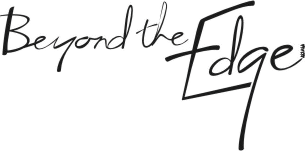What do facilitators need to know?
How does facilitating vary from other meeting roles – such as chairing, mediating, moderating and emceeing? While there may be some elements of these other roles in facilitation, the main difference is one of intention. Facilitators need to be clear about their intention – why they are facilitating at all and who for, why they are using this particular process or activity, and what experience they intend the group to have. This is very different to having pre-conceived outcomes and takes courage to let go of what you think the group may need to do and take your cues from the group itself.
Why then have a facilitator at all?
I think it’s about changing perspectives and giving people permission to go into unexplored territory. It can be hard for a leader of a group or organisation to signal that THIS meeting will be different, when everything remains the same. Participants may fall into habitual behaviour simply because ‘this is how it always is’. By bringing in a facilitator from outsode the group or the organisation, it signals that THIS meeting is indeed different. For one thing, someone else is leading it.
So that’s a big responsibility for a facilitator – to use that ‘endowed power’ to be useful for the group.
Sometimes it’s simply a matter of setting the scene, asking a few questions and getting out of the way. Other times we need to shift perspectives or the frames through which people view their worlds. To be able to do this requires far more than the traditional facilitator toolkit of processes and activities. It requires an ability to see what might be helpful for the group – at this particular time – through a broad lens. Which means facilitators also need a kit-bag full of models and frameworks; to sometimes share as a way of illuminating particular behaviours and dilemmas the group might be exploring, or more often, to illuminate their own thinking and understanding of what the hell is going on!
And that old saying is ever so true: the map is not the territory. Like maps, frameworks and models can be useful guides but are no substitute for the real thing.
Here are some of my favourite models and frameworks.
Splash and Ripple
Developed by Plan:Net in Calgary, Canada, this model helps not-for-profits plan outcomes-based projects. You can read about it here in this pdf document Splash and Ripple: Planning and Managing for Results. I’ve found it useful in those situations where groups entangle themselves in planning language and arguments get in the way of any actual planning. It’s basically a metaphor based on inputs (people and rocks), activities (throwing rocks), outputs (splashes), outcomes (ripples) and impacts – what difference all those inputs, activities, outputs and outcomes actually make. There’s more to it than this, of course, but it’s useful to have this framework handy for those times when people talk about activities as outcomes. In many of the not-for-profit and government agencies that I work with, activity-based thinking is the norm and it takes a different lens for them to see their activities in a broader context.
Bennett’s Hierarchy
This is a program logic model, and one that I like using because it is people centred. Bennett’s Hierarchy was developed by Claude Bennett of the USDA to help describe what was expected in agricultural extension programs where some sort of behaviour change was wanted. It is based on seven levels and describes a causal chain of events. It can be used for planning and for evaluating a program.
Cynefin Framework
This framework explores the relationship between that which is simple, complicated, complex and chaotic – and importantly, how we might respond. A lot of my work is with groups who are operating in a complex environment. Often they will try to use tools from the simple and complicated domains to make sense of that which is complex. Using this framework can help groups explore other ways of making sense of the complex worlds in which they operate – and do so so more effectively. The drawing of the framework used here is courtesy of Anecdote.
The Groan Zone
When a group is struggling the temptation is to jump in and help them. After all, isn’t that what facilitators are supposed to do? Make it easier for groups? Not always. From Sam Kaner’s Facilitator’s Guide to Participatory Decision-Making is the concept of the Groan Zone – a phase that a group needs to work through, sandwiched between divergent thinking and convergent thinking. Holding space for a group to struggle is some of the most important – and difficult – work a facilitator can do.




Viv – I know you through afn. I’ve just taken a look-see at your blog and it’s terrific. Couldn’t get the splash and ripple document to download, tho’.
Nice…I’d add a few others that have been helpful to me which are both large and small scale maps: Theory U, some essentials on sustainability, a map about talking our way to decisions and my mother map, linking lots of the other maps I have been working with in the Art of Hosting workshops.
I find all of these extremely useful for helping to orient myself in the midle of a project, a meeting or a conversation.
So that didn’t work out very welll…I had linked up to all of these.
For more, just visit this link:
http://chriscorrigan.com/parkinglot/index.php?s=maps
Thank Chris – these are really helpful.
Welcome Michael – I’ve fixed that link now
Cheers
Viv
And one more from Tom Atlee
http://journalismthatmatters.files.wordpress.com/2008/06/tomsstorymodel.jpg
[…] I also handle uncertainty by investing in my own development – knowing ’stuff’ that might one day be useful, reading blogs, books, articles, attending conferences, hanging out with cool (smart) people who stretch my thinking and challenge me. I draw a lot on frameworks and models to help me make sense of uncertainty. I wrote about my favourite ones here. […]